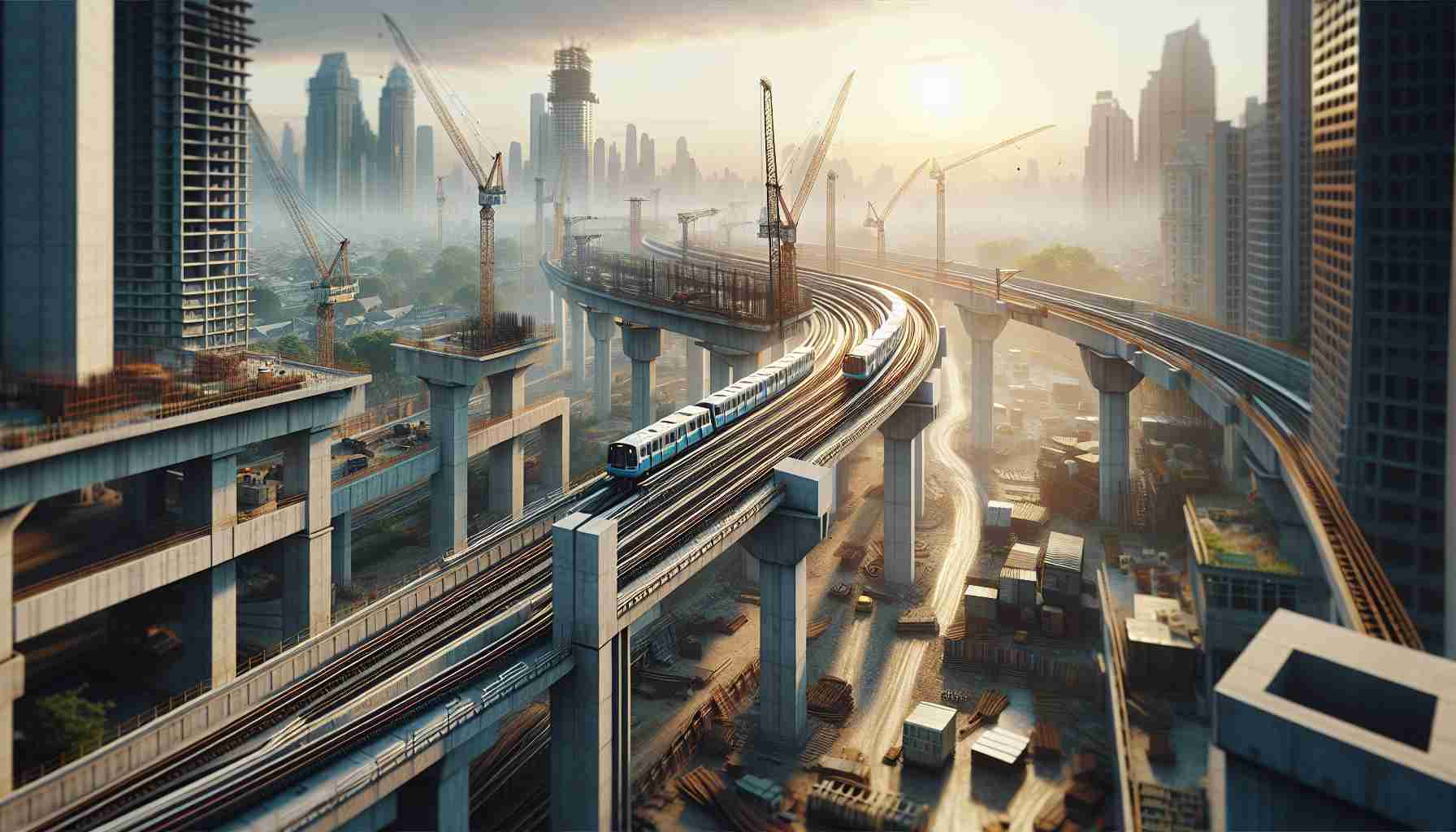Kawasaki City is set for a major upgrade as the project to elevate the JR East Nambu Line gets underway. Stretching approximately 4.5 kilometers between Yako Station and Musashi-Kosugi Station, the initiative aims for completion by the year 2039.
With plans to eliminate nine level crossings, including five notorious “closed crossings,” this modification promises to reduce accidents and traffic congestion, enhancing the safety and efficiency of regional transportation. The move is expected to also reunite divided areas, improving the convenience of daily life for residents.
The project will incorporate three stations: Kashimada Station, Hirama Station, and Mukogawara Station. Early in 2023, Kawasaki City secured approval for the urban planning project from Kanagawa Prefecture, marking a significant step in the development of the elevated railway and associated urban infrastructure.
The undertaking is estimated to cost around 138.7 billion yen, with approximately 117.2 billion yen allocated for the railway work and 21.5 billion yen earmarked for related roads. The transformation will not only redefine commuting experiences but also reshape the surrounding communities, fostering better accessibility and connectivity across the area.
This ambitious project marks a pivotal moment for Kawasaki, heralding a future of convenience and safety for its residents.
Transformative Infra-structure: A Glimpse into the Future of Kawasaki City
The elevation of the JR East Nambu Line represents a significant milestone not only for Kawasaki City but also for broader societal and cultural dynamics in Japan. As urban frameworks evolve, enhancing public transportation is crucial in fostering economic growth. Improved accessibility can lead to increased property values and spur local business development, fundamentally redefining neighborhoods and urban landscapes.
Moreover, this project serves as a blueprint for other cities grappling with similar infrastructural challenges. By eliminating level crossings, the initiative minimizes traffic accidents, heralding a potential national shift toward safer transport systems. This proactive approach in Kawasaki could inspire other municipalities to invest in their own transportation upgrades, with ripple effects on regional economies.
From an environmental perspective, elevating the railway line is poised to encourage greater reliance on public transit, thereby reducing individual car emissions and traffic congestion. As cities globally strive for sustainable development, this model illustrates how thoughtful infrastructure can align with green objectives.
Looking ahead, the successful implementation of this project may establish Kawasaki as a forerunner in urban innovation, showcasing how transportation enhancements can yield long-term benefits for both people and the planet. The evolution of Kawasaki City could pave the way for a new standard in urban living, characterized by improved safety, efficiency, and environmental conscientiousness.
Transforming Kawasaki: The Future of the JR East Nambu Line
Overview
Kawasaki City is embarking on an ambitious project to elevate the JR East Nambu Line, a crucial initiative that promises to fundamentally improve urban transportation and enhance safety for its residents. Spanning approximately 4.5 kilometers between Yako Station and Musashi-Kosugi Station, the project is slated for completion by 2039.
Major Features of the Project
– Elimination of Level Crossings: The project will remove nine level crossings, including five closed crossings that have been notorious for accidents. This change aims to enhance traffic flow and reduce congestion in the area.
– New Stations: Three new stations will be established: Kashimada Station, Hirama Station, and Mukogawara Station, providing more access points for commuters and potentially increasing the public transport user base.
– Financial Investment: The estimated cost for this substantial initiative is around 138.7 billion yen. Of this amount, approximately 117.2 billion yen is allocated for railway constructions and 21.5 billion yen for improving associated road infrastructure.
Advantages and Implications
Pros:
– Increased Safety: By eliminating dangerous level crossings, the project aims to significantly reduce the likelihood of accidents involving vehicles and pedestrians.
– Improved Connectivity: With new stations and enhanced road infrastructure, residents will benefit from shorter travel times and more direct routes to major hubs.
– Urban Development: The transformation is anticipated to stimulate local economies, potentially increasing property values and encouraging business development in the newly accessible areas.
Cons:
– Budget Constraints: The estimated cost of 138.7 billion yen poses challenges, particularly in ensuring that funding is secure and managed correctly.
– Construction Disruptions: Residents may experience disturbances during construction, which could affect daily commutes and local businesses temporarily.
Insights into Implementation
The successful execution of the Nambu Line elevation project could inspire similar infrastructure projects across Japan, reflecting a nationwide trend towards modernizing transport systems. Furthermore, Kawasaki City has already received approval from Kanagawa Prefecture, marking an important milestone in the planning phase.
Security and Sustainability Aspects
With safety at the forefront of the project, the removal of level crossings not only provides immediate benefits but also aligns with broader sustainability goals by promoting a more efficient transport network. Increased reliability and reduced congestion can lead to lower emissions and a smaller carbon footprint for the region.
Predictions for Future Impact
– Enhanced Property Values: As the project improves accessibility, there is potential for rising property values in the area surrounding the new stations. This could attract new residents and businesses.
– Increased Public Transport Usage: By providing more convenient options, the elevated line may encourage more residents to utilize public transport, which can alleviate road congestion and foster a shift towards green mobility.
Conclusion
The elevation of the JR East Nambu Line represents a significant advancement for Kawasaki City, merging urban planning with safety and efficiency. With an estimated completion by 2039, this project not only aims to reshape commuting for residents but also promises to invigorate the local economy and foster sustainable urban growth.
For more information about the ongoing developments in Kawasaki City, you can visit Kawasaki City.
